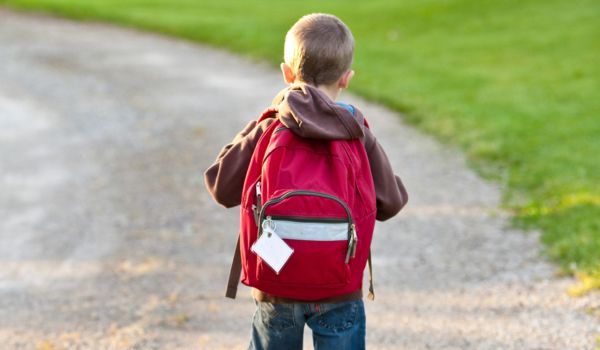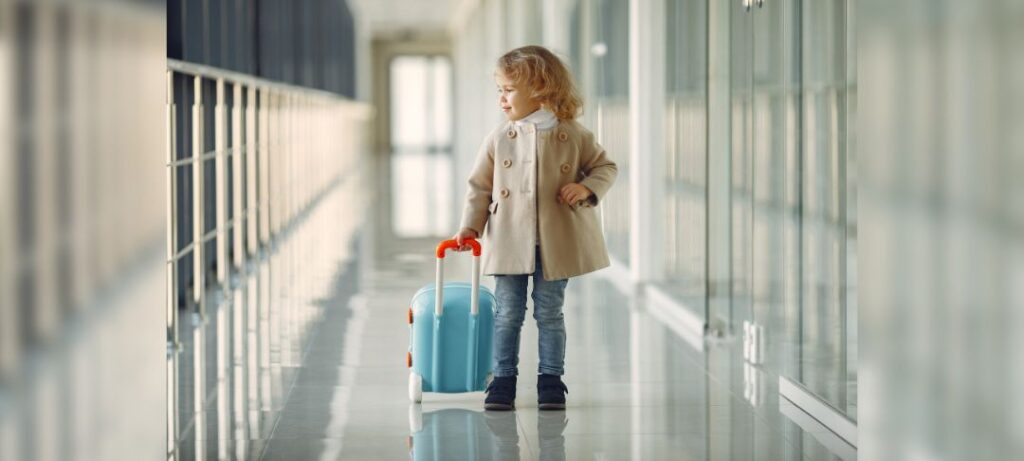Air travel can be both exciting and nerve-wracking for children, especially when they are traveling alone. As a parent, you may be wondering how old your child needs to be to fly solo and what safety measures airlines have in place to protect your child. In this article, we will explore everything you need to know about unaccompanied minors flying alone, including age requirements, safety measures, necessary documents, and much more. Whether you’re a parent considering letting your child fly alone for the first time or simply curious about the process, keep reading to learn more.
Minimum Age for Unaccompanied Minors to Fly Alone
When it comes to flying alone, age requirements for unaccompanied minors vary depending on the airline and the destination. However, in the United States, the Transportation Security Administration (TSA) has set the minimum age for children traveling alone as 5 years old. This means that children under the age of 5 are not allowed to travel alone on any domestic or international flight. Some airlines may have different age requirements, so it is important to check with your airline before booking your child’s flight. For example, Delta Airlines requires children to be at least 8 years old to travel alone on most flights, while Southwest Airlines allows children as young as 5 years old to travel alone. It’s also worth noting that some airlines may have additional requirements, such as direct flights only, or may not allow unaccompanied minors to travel during certain times of the day.
If your child meets the age requirement to fly alone, you’ll need to follow the airline’s specific procedures for unaccompanied minors. This usually involves filling out paperwork and paying an additional fee, which can range from $50 to $150 depending on the airline.
Safety Measures in Place for Unaccompanied Minors
Airlines take the safety of unaccompanied minors very seriously and have several measures in place to ensure their well-being. Firstly, the airline staff will accompany the child through security and help them board the plane. Once on board, the child will be seated in a specific section of the plane where the flight attendants can keep a close eye on them. The child will also be given a special badge to wear, which indicates that they are an unaccompanied minor. The flight attendants will check on the child throughout the flight and make sure they have everything they need, including meals and snacks.
Another important safety measure is that the child will not be allowed to leave the plane until they are met by an authorized adult at the destination airport. This adult will need to provide identification and sign paperwork before the child is released into their care. If the authorized adult is unable to meet the child at the destination, the airline will make arrangements for the child to be cared for until the adult can arrive.
Airlines also have protocols in place for unexpected situations, such as flight delays or cancellations. In these cases, the airline staff will keep the child informed and make arrangements for their care until they can be safely reunited with an authorized adult.
Documents Needed for Unaccompanied Minors
In addition to the usual travel documents such as a passport or ID, unaccompanied minors will need additional paperwork to fly alone. This typically includes a completed unaccompanied minor form, which can be obtained from the airline’s website or at the airport. The form will need to include the child’s name, age, and contact information for both the child and the authorized adult who will be picking them up at the destination. Some airlines may also require a copy of the child’s birth certificate or a notarized letter of consent from the child’s parent or legal guardian.
It is important to ensure that all necessary documents are completed and in order before your child’s flight, as failure to do so could result in your child being unable to fly. It’s also a good idea to make copies of all the documents and keep them with you, in case they are needed during the journey.
What Are the Airlines’ Rules for Unaccompanied Minors?

When it comes to unaccompanied minors flying alone, each airline has its own specific set of rules and procedures. Generally, these rules cover the age range for unaccompanied minors, fees, documentation, and the specific services provided to ensure the safety and well-being of the child throughout their journey.
The age range for unaccompanied minors can vary by airline. While the TSA has set the minimum age for children traveling alone at 5 years old, many airlines have their own age requirements that may be higher. For example, United Airlines requires children to be at least 12 years old to travel alone on international flights, while American Airlines requires children to be at least 15 years old to travel alone on certain routes. Fees for unaccompanied minors also vary by airline and may be charged per leg of the journey or as a flat fee.
Documentation requirements for unaccompanied minors can also vary by airline. Generally, airlines require a completed unaccompanied minor form that includes the child’s name, age, and contact information for both the child and the authorized adult who will be picking them up at the destination. Some airlines may also require a copy of the child’s birth certificate or a notarized letter of consent from the child’s parent or legal guardian.
Airlines also provide specific services to ensure the safety and well-being of unaccompanied minors throughout their journey. These services may include staff assistance through security and boarding, designated seating areas on the plane, and special badges or wristbands to identify the child as an unaccompanied minor. Flight attendants will also check on the child throughout the flight and provide meals and snacks as needed.
How Do Unaccompanied Minors Board Their Flights?
Boarding procedures for unaccompanied minors can vary by airline, but generally, the child will be escorted through security and to the gate by an airline staff member. At the gate, the child will be given a special badge or wristband to wear that identifies them as an unaccompanied minor. Once it is time to board the plane, the airline staff will accompany the child to their seat and ensure that they are safely settled in.
In some cases, the child may be allowed to board the plane before the other passengers. This can give them extra time to get situated and become comfortable before the flight takes off. It can also help to reduce the stress and anxiety of boarding with a large crowd.
Before the flight takes off, the flight attendants will go over any important information with the child, such as safety procedures and how to use the call button. The child will also be given any necessary meals or snacks during the flight.
How Do Unaccompanied Minors Get Off the Plane?
When the flight arrives at the destination, the child will be escorted off the plane by a flight attendant and taken to a designated area in the terminal. Here, they will wait for the authorized adult who will be picking them up. The adult will need to provide identification and sign paperwork before the child is released into their care.
If the authorized adult is not able to meet the child at the destination, the airline will make arrangements for the child to be cared for until the adult can arrive. This may involve placing the child in a supervised area of the airport or arranging for the child to be transported to a hotel or other location.
It’s important to note that airlines take the safety and well-being of unaccompanied minors very seriously and have protocols in place for unexpected situations, such as flight delays or cancellations. In these cases, the airline staff will keep the child informed and make arrangements for their care until they can be safely reunited with an authorized adult. By following these procedures, airlines are able to ensure that unaccompanied minors are able to travel safely and comfortably, even when they are traveling alone.
In conclusion, unaccompanied minors have the opportunity to travel alone, but it comes with a set of guidelines that ensure their safety and well-being during the flight. Airlines have specific rules and procedures in place for unaccompanied minors, including age requirements, fees, documentation, and services provided to ensure their safety. The boarding process for unaccompanied minors includes an escort through security and to the gate, where they will receive a special badge or wristband to identify them as unaccompanied minors. Flight attendants will assist the child with any necessary information and provide meals and snacks throughout the flight. When the plane lands, the child will be escorted off the plane to a designated area where they will wait for the authorized adult to pick them up. By following these guidelines, airlines ensure that unaccompanied minors can travel safely and comfortably, even when they are traveling alone.
Conclusion
Flying alone can be a thrilling experience for children, but it’s important to ensure that they are safe and well taken care of during their journey. By understanding the age requirements, safety measures, and necessary documents for unaccompanied minors, you can feel confident in letting your child travel solo. Remember to check with your airline for their specific procedures and requirements, and to prepare your child for the journey by discussing the process with them and ensuring that they have everything they need for a comfortable and stress-free flight.
